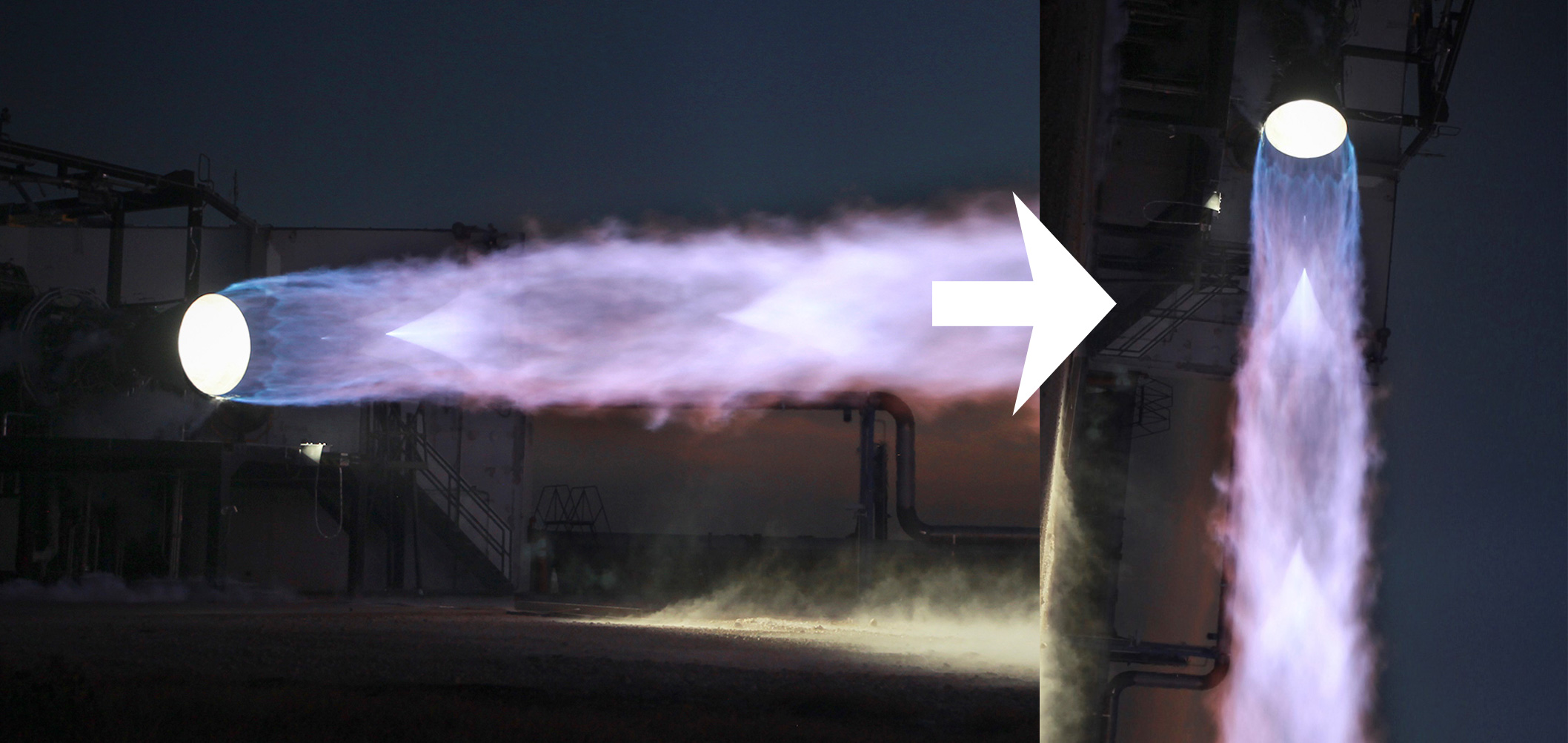
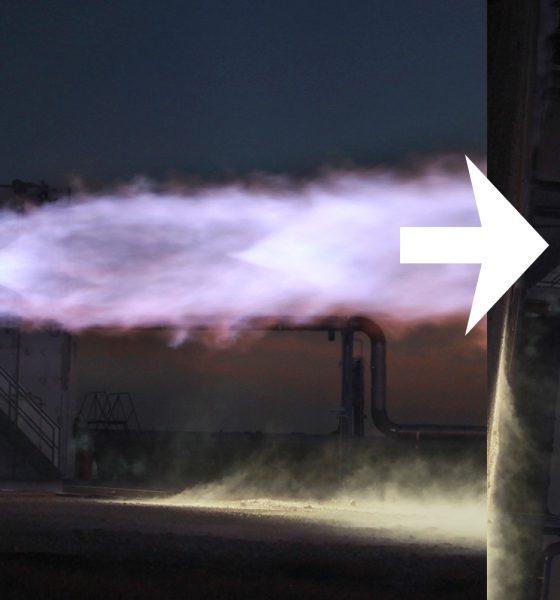
News
SpaceX's new Starship test stand to make life a little easier for Raptor engine engineers
SpaceX recently debuted a new rocket engine test stand at its Central Texas development facilities and one specific aspect of the so-called ‘tripod stand’ could make life a lot easier for Starship’s Raptor engine engineers.
The success of SpaceX’s extremely ambitious Starship spacecraft and Super Heavy boosters hinges heavily on the prior success of a next-generation rocket engine the company is developing itself. Known as Raptor, the engine is likely one of the most complex ever developed, owing to its use of a combustion cycle that’s as challenging and unforgiving as it is efficient. That efficiency is the draw.
The decision to base the Starship launch system around methane and oxygen propellant – relatively dense, safe to handle, and easy to generate on Mars – means that it can never be as efficient as a rocket based on hydrogen and oxygen, the pinnacle of chemical combustion-based propulsion. For a methalox rocket as nominally reusable as Starship, going to extremes to eke even a smidge of extra efficiency out of its Raptor engines is a reasonable – if not necessary – decision. However, that pursuit of efficiency carries many hurdles with it, some of which can even be exacerbated by the equipment used to test those engines on the ground.
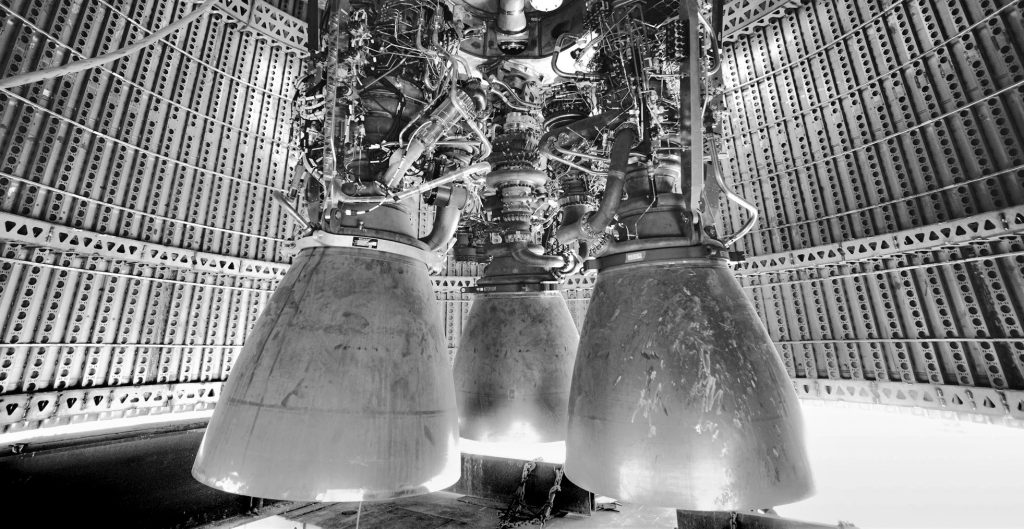
Raptor is less than unique in this particular case but SpaceX’s engine development and testing has matured to the point that the stands it’s relied on for static fires have become a detriment to the engine’s progress. Specifically, aside from Starhopper, all previous Raptor static fires have been performed with engines installed horizontally in test bays located at SpaceX’s McGregor, Texas development facilities. While in flight, Raptor engines will theoretically never experience wear and tear similar to the unique conditions imposed by horizontal testing – engine burns will almost invariably exert forces along a vertical (up and down) axis.
To almost anyone else, even other engine development companies, this might seem like an insignificant difference. Built around the full-flow staged combustion (FFSC) cycle and meant to be unprecedentedly reusable and reliable, the Raptor engine is not quite as forgiving. Since the engine’s inaugural full-scale static fire test just one year ago, SpaceX CEO Elon Musk has noted several times that Raptor could benefit from new vertical test stands.
Speaking in October 2019, Musk stated that a new vertical test stand would “hopefully allow simplification of Raptor design, as pump shaft wear & drainage is better in vertical config.” More generally, testing Raptor engines vertically would also be “more representative of flight [conditions]”, allowing SpaceX to live up to its proven “test as you fly” philosophy.
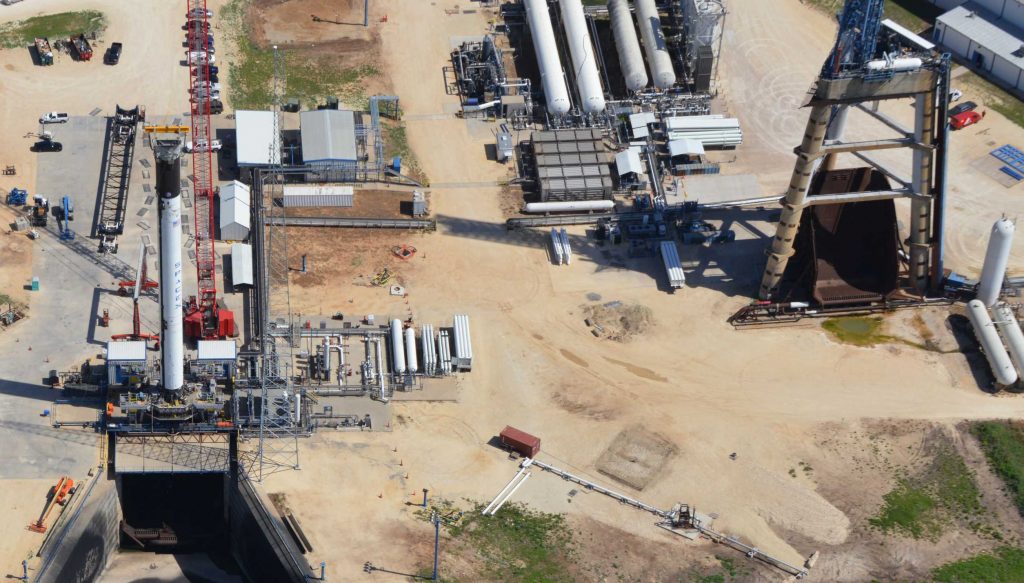
Indeed, aside from Starhopper’s two successful test flights and a handful of static fires, Raptor has performed barely any vertical testing despite more than 3200 seconds of static fires completed with 18 full-scale engine prototypes in the last 12 months alone. Including subscale engines tested from 2016 through 2018, SpaceX’s Raptor engine has likely completed some 5000 seconds (>80 minutes) of test fires over the course of three and a half years of development.
Aside from allowing SpaceX engineers to potentially simplify the Raptor engine design and test the Starship engines in conditions much closer to what they will experience in flight, the addition of a new dedicated test stand – on top of two existing horizontal bays – should allow even more testing to be done in a given time-frame. The more testing that can be done, the more engines SpaceX can quickly qualify for flight, and given that every Starship/Super Heavy pair could require up to 43 new Raptor engines, SpaceX will need all the testing capacity it can get.
Check out Teslarati’s Marketplace! We offer Tesla accessories, including for the Tesla Cybertruck and Tesla Model 3.

News
Tesla dispels reports of ‘sales suspension’ in California
“This was a “consumer protection” order about the use of the term “Autopilot” in a case where not one single customer came forward to say there’s a problem.
Sales in California will continue uninterrupted.”
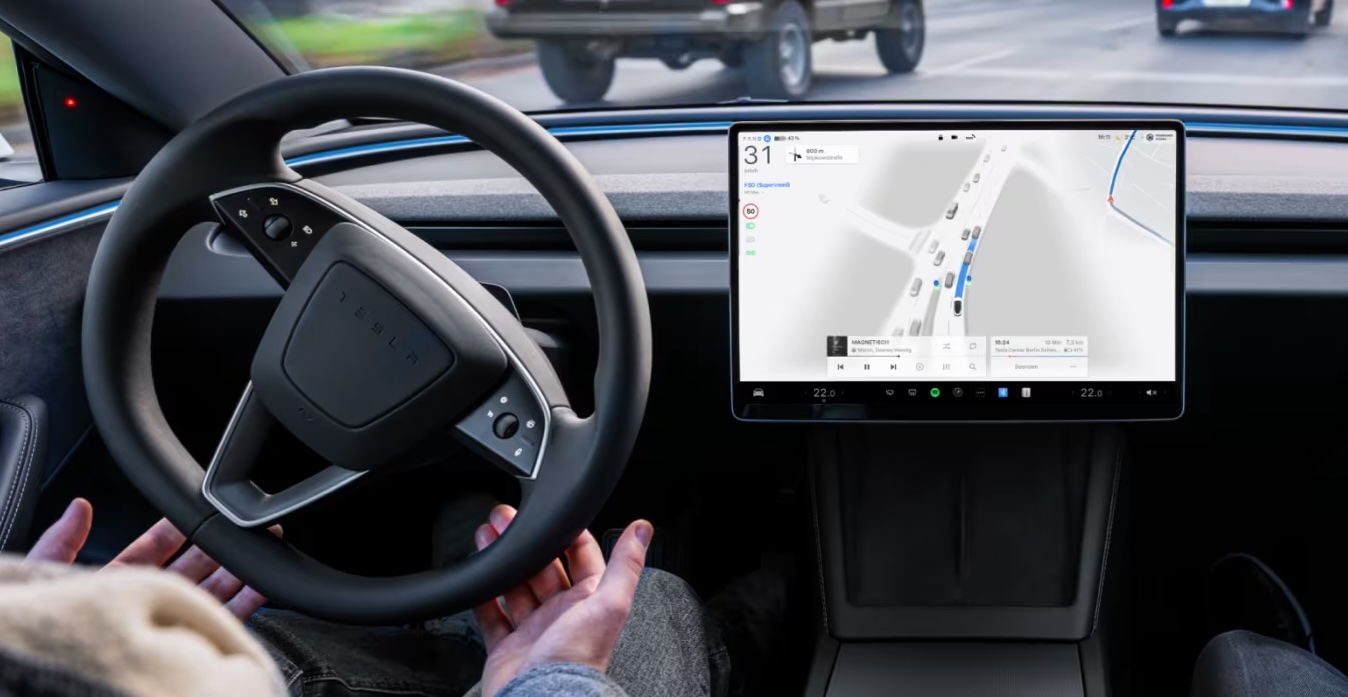
Tesla has dispelled reports that it is facing a thirty-day sales suspension in California after the state’s Department of Motor Vehicles (DMV) issued a penalty to the company after a judge ruled it “misled consumers about its driver-assistance technology.”
On Tuesday, Bloomberg reported that the California DMV was planning to adopt the penalty but decided to put it on ice for ninety days, giving Tesla an opportunity to “come into compliance.”
Tesla enters interesting situation with Full Self-Driving in California
Tesla responded to the report on Tuesday evening, after it came out, stating that this was a “consumer protection” order that was brought up over its use of the term “Autopilot.”
The company said “not one single customer came forward to say there’s a problem,” yet a judge and the DMV determined it was, so they want to apply the penalty if Tesla doesn’t oblige.
However, Tesla said that its sales operations in California “will continue uninterrupted.”
It confirmed this in an X post on Tuesday night:
This was a “consumer protection” order about the use of the term “Autopilot” in a case where not one single customer came forward to say there’s a problem.
Sales in California will continue uninterrupted.
— Tesla North America (@tesla_na) December 17, 2025
The report and the decision by the DMV and Judge involved sparked outrage from the Tesla community, who stated that it should do its best to get out of California.
One X post said California “didn’t deserve” what Tesla had done for it in terms of employment, engineering, and innovation.
Tesla has used Autopilot and Full Self-Driving for years, but it did add the term “(Supervised)” to the end of the FSD suite earlier this year, potentially aiming to protect itself from instances like this one.
This is the first primary dispute over the terminology of Full Self-Driving, but it has undergone some scrutiny at the federal level, as some government officials have claimed the suite has “deceptive” naming. Previous Transportation Secretary Pete Buttigieg was vocally critical of the use of the name “Full Self-Driving,” as well as “Autopilot.”
News
New EV tax credit rule could impact many EV buyers
We confirmed with a Tesla Sales Advisor that any current orders that have the $7,500 tax credit applied to them must be completed by December 31, meaning delivery must take place by that date. However, it is unclear at this point whether someone could still claim the credit when filing their tax returns for 2025 as long as the order reflects an order date before September 30.
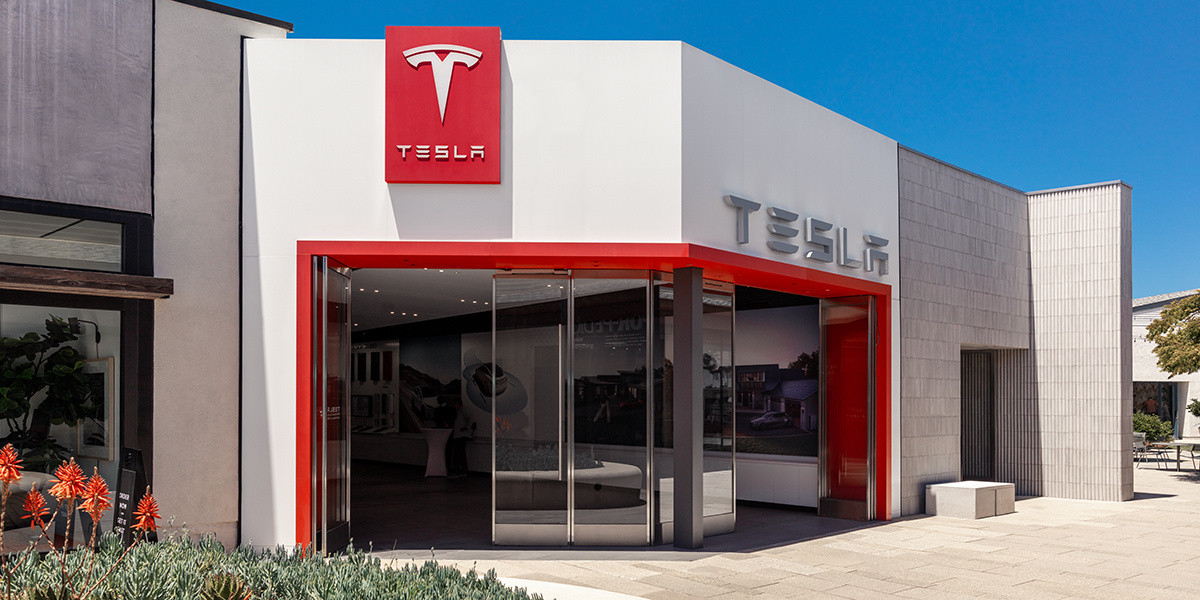
Tesla owners could be impacted by a new EV tax credit rule, which seems to be a new hoop to jump through for those who benefited from the “extension,” which allowed orderers to take delivery after the loss of the $7,500 discount.
After the Trump Administration initiated the phase-out of the $7,500 EV tax credit, many were happy to see the rules had been changed slightly, as deliveries could occur after the September 30 cutoff as long as orders were placed before the end of that month.
However, there appears to be a new threshold that EV buyers will have to go through, and it will impact their ability to get the credit, at least at the Point of Sale, for now.
Delivery must be completed by the end of the year, and buyers must take possession of the car by December 31, 2025, or they will lose the tax credit. The U.S. government will be closing the tax credit portal, which allows people to claim the credit at the Point of Sale.
🚨UPDATE: $7,500 Tax Credit Portal “Closes By End of Year”.
This is bad news for pending Tesla buyers (MYP) looking to lock in the $7,500 Tax Credit.
“it looks like the portal closes by end of the year so there be no way for us to guarantee the funds however, we will try our… pic.twitter.com/LnWiaXL30k
— DennisCW | wen my L (@DennisCW_) December 15, 2025
We confirmed with a Tesla Sales Advisor that any current orders that have the $7,500 tax credit applied to them must be completed by December 31, meaning delivery must take place by that date.
However, it is unclear at this point whether someone could still claim the credit when filing their tax returns for 2025 as long as the order reflects an order date before September 30.
If not, the order can still go through, but the buyer will not be able to claim the tax credit, meaning they will pay full price for the vehicle.
This puts some buyers in a strange limbo, especially if they placed an order for the Model Y Performance. Some deliveries have already taken place, and some are scheduled before the end of the month, but many others are not expecting deliveries until January.
Elon Musk
Elon Musk takes latest barb at Bill Gates over Tesla short position
Bill Gates placed a massive short bet against Tesla of ~1% of our total shares, which might have cost him over $10B by now
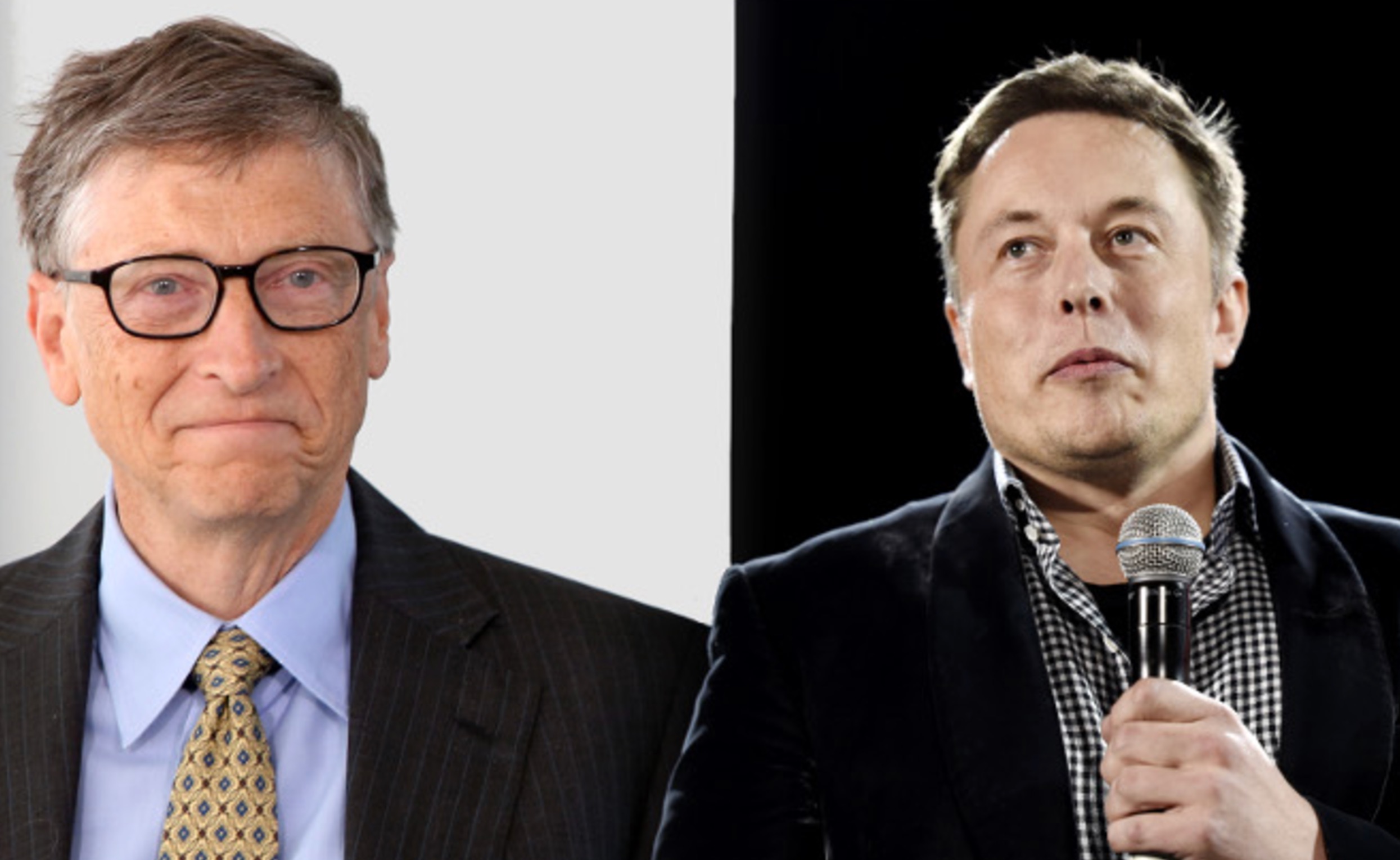
Elon Musk took his latest barb at former Microsoft CEO Bill Gates over his short position against the company, which the two have had some tensions over for a number of years.
Gates admitted to Musk several years ago through a text message that he still held a short position against his sustainable car and energy company. Ironically, Gates had contacted Musk to explore philanthropic opportunities.
Elon Musk explains Bill Gates beef: He ‘placed a massive bet on Tesla dying’
Musk said he could not take the request seriously, especially as Gates was hoping to make money on the downfall of the one company taking EVs seriously.
The Tesla frontman has continued to take shots at Gates over the years from time to time, but the latest comment came as Musk’s net worth swelled to over $600 billion. He became the first person ever to reach that threshold earlier this week, when Tesla shares increased due to Robotaxi testing without any occupants.
Musk refreshed everyone’s memory with the recent post, stating that if Gates still has his short position against Tesla, he would have lost over $10 billion by now:
Bill Gates placed a massive short bet against Tesla of ~1% of our total shares, which might have cost him over $10B by now
— Elon Musk (@elonmusk) December 17, 2025
Just a month ago, in mid-November, Musk issued his final warning to Gates over the short position, speculating whether the former Microsoft frontman had still held the bet against Tesla.
“If Gates hasn’t fully closed out the crazy short position he has held against Tesla for ~8 years, he had better do so soon,” Musk said. This came in response to The Gates Foundation dumping 65 percent of its Microsoft position.
Tesla CEO Elon Musk sends final warning to Bill Gates over short position
Musk’s involvement in the U.S. government also drew criticism from Gates, as he said that the reductions proposed by DOGE against U.S.A.I.D. were “stunning” and could cause “millions of additional deaths of kids.”
“Gates is a huge liar,” Musk responded.
It is not known whether Gates still holds his Tesla short position.








